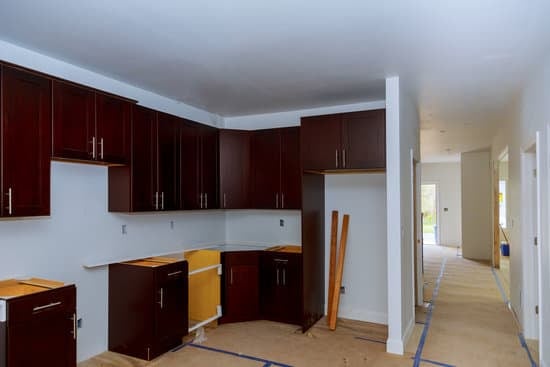Having a dedicated space to unleash your creativity is crucial for any artist or creative individual. In this article, we will discuss how to improve your home studio and turn it into the ultimate workspace for your craft. Whether you’re a musician, writer, photographer, or any other creative professional, having a well-equipped and organized home studio can significantly enhance your work output.
Assessing your current setup is the first step in improving your home studio. By evaluating what works well and what doesn’t in your current space, you can identify areas that need improvement and make necessary changes. This process will help you create a more functional and efficient workspace tailored to your specific needs and workflow.
Creating a practical layout is essential for maximizing space utilization and productivity in your home studio. By optimizing the arrangement of furniture, equipment, and storage solutions, you can ensure that every inch of space serves a purpose. A well-thought-out layout will not only improve the aesthetics of your studio but also enhance your overall work efficiency and creative inspiration.
Assessing Your Current Setup
When it comes to improving your home studio, the first step is to assess your current setup. This involves taking a closer look at the equipment you have, the layout of your space, and how functional it is for your creative needs. By evaluating what works well and what doesn’t in your home studio, you can identify areas that need improvement and make the necessary changes to enhance the overall performance of your workspace.
To effectively assess your current setup, consider creating a checklist or list of areas to evaluate. Here are some key points to consider:
- Evaluate the placement of your equipment such as your computer, monitors, instruments, and other tools. Make sure they are easily accessible and arranged in a way that promotes efficiency.
- Take note of any deficiencies in your current setup such as inadequate lighting, poor acoustics, or lack of storage solutions. These issues can impact your productivity and creativity.
- Consider the flow of your workspace and how conducive it is to your creative process. Look for any hindrances or obstacles that may be affecting your workflow.
By identifying what works well and what doesn’t in your current setup, you can then begin to make targeted improvements on how to improve your home studio. Whether it’s reorganizing your space, investing in new equipment, or making adjustments for better sound quality, assessing your current setup is an essential first step towards creating a productive and inspiring home studio.
Creating a Practical Layout
Optimize Your Workflow
Consider the flow of your workspace, ensuring that essential tools and equipment are easily accessible. Organize your studio in a way that allows you to move seamlessly from one task to another without any obstacles. This could involve grouping similar items together, creating designated zones for different activities, and minimizing clutter.
Ergonomic Design
Invest in ergonomic furniture such as a comfortable chair and an adjustable desk to prevent strain on your body during long hours of work. Position your equipment at the right height and angle to avoid repetitive stress injuries. A well-designed workspace can contribute to your overall well-being and productivity.
Multi-Functional Spaces
If you have limited space, consider incorporating multi-functional furniture or equipment that can serve more than one purpose. For example, a desk with built-in storage or a keyboard stand that can be easily folded away when not in use. Being able to adapt your space based on the task at hand will help you make the most out of your home studio setup.
By implementing these ideas into your home studio layout, you can create a space that is not only efficient but also conducive to creativity and inspiration. Remember that the goal is to tailor the layout to fit your specific needs and preferences while also allowing room for growth and adaptation as your creative endeavors evolve over time.
Upgrading Your Equipment
In addition to a quality microphone, upgrading other key pieces of equipment such as headphones, monitors, and audio interfaces can also greatly enhance the overall performance of your home studio. High-quality headphones allow you to accurately monitor the sound while recording or mixing, ensuring that you can make informed decisions about your audio projects. Upgrading to studio monitors can provide a more accurate representation of your recordings, allowing you to hear nuances that may be missed with standard speakers.
Moreover, investing in a reliable audio interface can improve the sound quality of your recordings and streamline your workflow. An audio interface acts as the bridge between your instruments/microphones and computer, converting analog signals into digital data for recording or playback.
By choosing an interface with high-quality preamps and converters, you can achieve cleaner recordings with minimal noise and distortion. Remember that when upgrading equipment in your home studio, it’s essential to balance quality with affordability to maximize performance without breaking the bank.
| Equipment | Importance |
|---|---|
| Microphone | Clear and crisp audio quality |
| Headphones | Accurate monitoring during recording or mixing |
| Monitors | Precise sound representation for better decision-making |
| Audio Interface | Cleaner recordings with high-quality preamps and converters |
Soundproofing and Acoustics
Creating a professional sound environment in your home studio is crucial for producing high-quality recordings. Soundproofing and acoustics are key elements that can make a significant difference in the outcome of your work. Here are some tips on how to improve your home studio setup to achieve the best sound quality possible:
- Start by assessing the acoustics of your room. You can do this by clapping your hands and listening for any echoes or reverberations. If you notice any unwanted sounds, consider investing in acoustic panels or bass traps to absorb excess noise and improve the overall sound quality.
- Another important aspect of soundproofing is minimizing outside noise from entering your workspace. Make sure to seal any gaps or cracks in windows or doors, and consider adding heavy curtains or soundproofing foam to block out external distractions.
- Investing in quality studio monitors and headphones can also help improve the accuracy of your audio playback. By using reliable equipment, you can ensure that you are hearing your recordings as they truly sound, allowing for better mixing and mastering decisions.
By taking the time to address soundproofing and acoustics in your home studio, you can create an optimal environment for recording and mixing music, podcasts, videos, and more. Remember that every detail matters when it comes to achieving professional results, so don’t overlook the importance of enhancing the sound quality of your recordings. Experiment with different techniques and tools to find what works best for your space and budget, ultimately elevating the overall performance of your home studio.
Lighting and Ambiance
When it comes to creating a productive and inspiring home studio, lighting and ambiance play a crucial role in setting the mood for creativity. Poor lighting can strain your eyes and affect your overall productivity, while the right lighting can enhance your focus and creativity. Here are some tips on how to improve your home studio‘s lighting and ambiance:
Natural Light vs. Artificial Light
One of the key factors in setting up your home studio is to consider the source of light. Natural light is ideal for providing a warm and inviting atmosphere, as well as reducing eye strain. If possible, position your workspace near a window to allow natural light to flow into the room.
However, artificial lighting is also essential, especially when working at night or in dimly lit spaces. Invest in high-quality LED lights that mimic natural daylight to create a bright and vibrant workspace.
Task Lighting
In addition to overall ambient lighting, task lighting is crucial for specific work areas in your home studio. Desk lamps with adjustable brightness settings are great for providing focused light on your work surface without causing glare or shadows. Consider installing under-cabinet lights for illuminating shelves or storage areas, ensuring that every corner of your studio is well-lit for maximum productivity.
Ambiance and Decor
Apart from functional lighting, ambiance plays a significant role in enhancing creativity and productivity. Choose decor elements like plants, wall art, or inspirational quotes that reflect your personality and style. Consider adding dimmable lights or color-changing LEDs to create different moods depending on the task at hand – whether you need energizing bright light for brainstorming sessions or calming warm light for relaxation.
By paying attention to lighting and ambiance in your home studio, you can create a space that not only fosters creativity but also boosts productivity. Experiment with different lighting setups and decor elements until you find what works best for you and inspires you to produce your best work while enjoying your time in the studio.
Organization and Storage Solutions
When it comes to maintaining a productive and efficient home studio, having the right organization and storage solutions in place is crucial. A clutter-free workspace not only helps you stay focused and creative but also allows for better workflow and productivity. Here are some tips on how to improve your home studio by keeping it organized and clutter-free.
First and foremost, assess your current storage needs based on the equipment and supplies you use regularly in your home studio. Invest in shelving units, drawers, containers, or organizers that can help keep everything tidy and easily accessible. Consider labeling each storage space to ensure that everything has its designated spot.
Additionally, establishing a daily cleaning routine can go a long way in maintaining an organized home studio. Take a few minutes at the end of each day to tidy up your workspace, put away any equipment or supplies used, and clear off surfaces. By staying on top of clutter regularly, you can prevent it from piling up over time.
Lastly, consider implementing digital organization tools to manage files, projects, and ideas efficiently. Use cloud storage services for backing up important data, keep digital files organized in folders on your computer, and utilize project management apps to stay on top of deadlines and tasks. By incorporating both physical and digital organization strategies, you can create a clutter-free environment that fosters creativity and productivity in your home studio.
| Tips for Organization | Benefits |
|---|---|
| Invest in storage solutions like shelves and containers | Easy access to supplies |
| Establish a daily cleaning routine | Maintain an organized workspace |
| Use digital organization tools for managing files | Efficiently handle projects and tasks |
Personalizing Your Space
Creating a personalized and inspiring atmosphere in your home studio is essential for boosting creativity and productivity. One way to personalize your space is by incorporating items that reflect your personality and interests. This could include artwork, photographs, or decor pieces that inspire you and bring you joy. By surrounding yourself with things that hold meaning to you, you can create a space that truly feels like your own.
Another way to personalize your home studio is by adding elements that stimulate your senses and enhance the overall ambiance. Consider incorporating elements such as plants, essential oil diffusers, or calming music to create a soothing environment that fosters inspiration. Lighting also plays a crucial role in setting the mood in your studio. Experiment with different lighting options such as lamps, string lights, or candles to find the perfect balance of brightness and warmth for your space.
Furthermore, don’t be afraid to get creative with the layout and design of your home studio. Think outside the box when it comes to organizing your tools and equipment.
Consider unconventional storage solutions such as pegboards, floating shelves, or repurposed furniture to keep your workspace clutter-free while adding a unique touch to the room. By personalizing your space in a way that resonates with you, you can cultivate a home studio that not only enhances your creativity but also reflects your individuality as an artist or creator.
By implementing these personalized touches into your home studio design, you can create an environment that not only fuels your creativity but also serves as a sanctuary where you can fully express yourself without limitations. Embrace what makes you unique and incorporate those elements into your workspace to make it truly one-of-a-kind. Remember, the key is to design a space where you feel comfortable, inspired, and motivated to create exceptional work.
Maintaining and Cleaning Your Home Studio
Firstly, create a regular cleaning schedule to ensure that dust and dirt do not accumulate on your equipment. Wipe down surfaces, clean cables, and dust off any electronic devices to prevent them from overheating. Additionally, consider investing in air purifiers or dehumidifiers to maintain optimal conditions for your gear.
Another important aspect of maintaining your home studio is proper cable management. Keep cables neatly organized and labeled to avoid tripping hazards and tangling issues. Use cable ties or clips to secure them along walls or under desks. This not only makes your studio safer but also makes it easier to troubleshoot any connectivity issues that may arise.
Lastly, periodically inspect and test all of your equipment to ensure everything is functioning properly. Check for any loose connections, signs of wear and tear, or outdated software that may need updating. By staying proactive with maintenance tasks, you can prevent costly repairs or replacements in the future. Following these maintenance tips will not only prolong the life of your gear but also improve the overall functionality of your home studio.
Conclusion
In conclusion, creating a productive and inspiring home studio involves a combination of elements that harmoniously work together to enhance your creative process. By following the steps outlined in this guide on how to improve your home studio, you can transform your space into a haven for artistic expression.
Assessing your current setup is crucial in determining what is working well and what areas need improvement. From there, creating a practical layout that maximizes space and efficiency will ensure that you have a functional workspace where ideas can flow freely. Upgrading your equipment with quality tools can make a significant difference in the performance and output of your work.
Soundproofing and acoustics also play a vital role in enhancing the sound quality of your recordings. Investing in proper treatment for your space will result in professional-level results. Additionally, paying attention to lighting and ambiance, as well as focusing on organization and storage solutions, will contribute to a conducive environment for creativity.
Personalizing your space with touches that inspire you can further boost your motivation to create. Finally, maintaining and cleaning your home studio regularly will not only prolong the lifespan of your equipment but also ensure a clutter-free workspace that fosters productivity. Putting all these elements together will result in a home studio that serves as a sanctuary for bringing your creative visions to life.
Frequently Asked Questions
How Can I Improve the Sound in My Home Studio?
Improving the sound in your home studio can be done through various means. Acoustic treatment, such as adding sound-absorbing panels or bass traps, can help reduce unwanted reflections and improve overall sound quality.
Investing in high-quality studio monitors and headphones is also crucial for accurate monitoring of audio. Additionally, proper speaker placement and creating a dedicated listening position can further enhance the sound in your home studio.
What Should I Upgrade First in My Home Studio?
When considering what to upgrade first in your home studio, it’s essential to prioritize the elements that will have the most significant impact on your sound quality. In many cases, investing in a good pair of studio monitors should be the first upgrade.
Quality monitors will provide you with accurate playback of your audio recordings, helping you make more informed mixing decisions. Additionally, upgrading your audio interface or microphone can also greatly improve the overall quality of your recordings.
How Do I Upgrade My Studio?
Upgrading your studio involves a combination of technical improvements and acoustic enhancements. Start by assessing the current state of your equipment and identifying areas that need upgrading. This could include upgrading your studio monitors, headphones, audio interface, microphones, or even investing in a better computer for recording and mixing tasks.
Acoustic treatment is also an essential aspect of studio upgrades – consider adding bass traps, diffusers, and absorbers to create a balanced acoustic environment in your space. Regular maintenance and calibration of your equipment are also crucial to ensure optimal performance in your home studio setup.

I’m thrilled to have you here as a part of the Remodeling Top community. This is where my journey as an architect and remodeling enthusiast intersects with your passion for transforming houses into dream homes.





